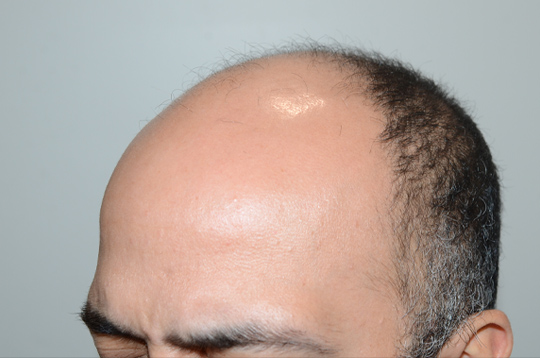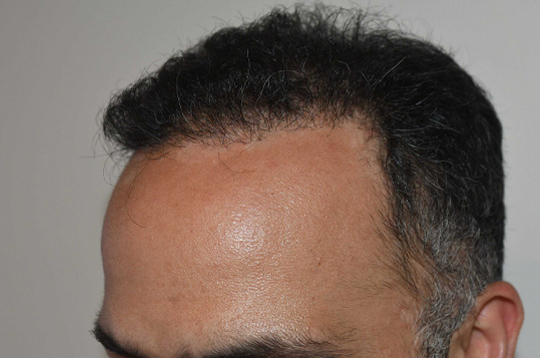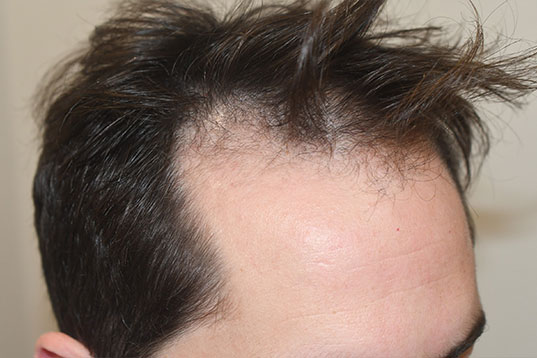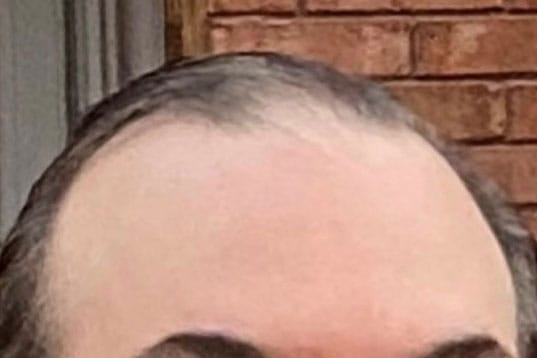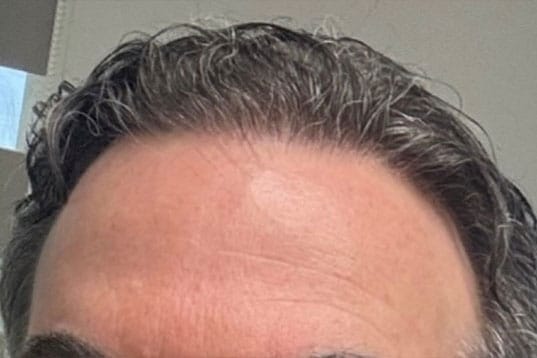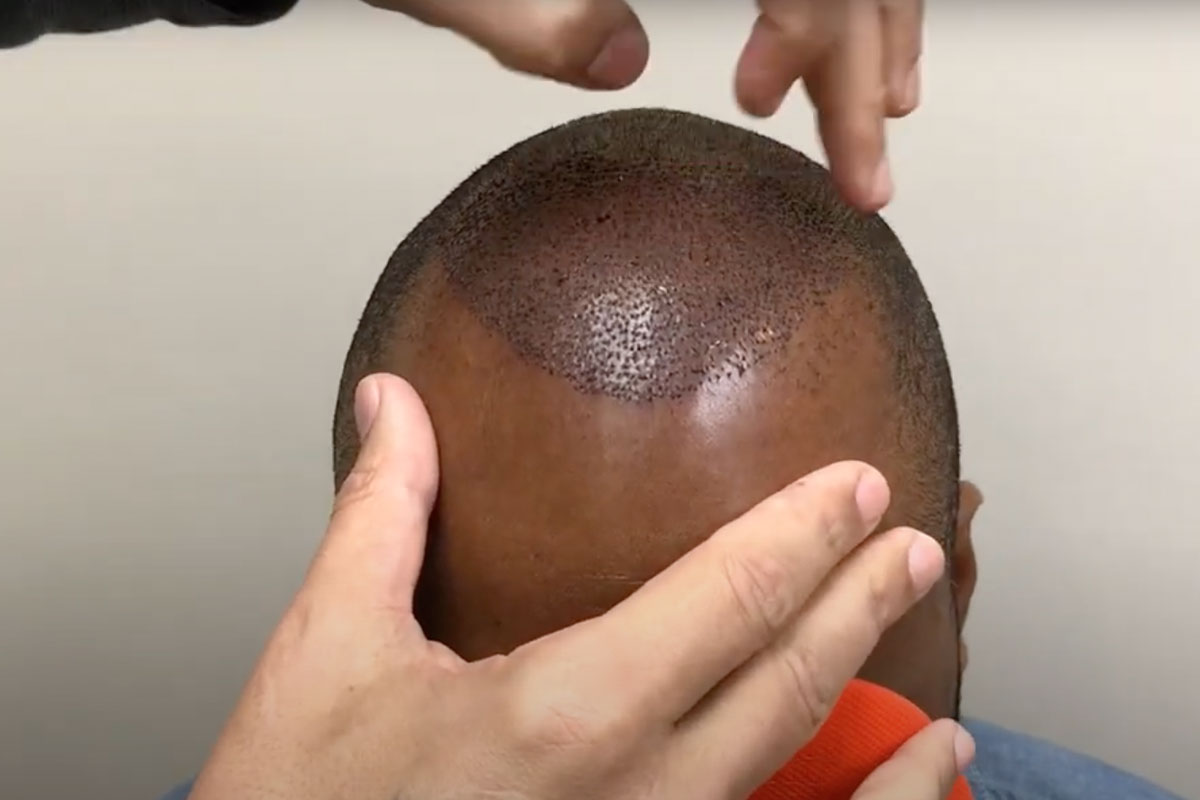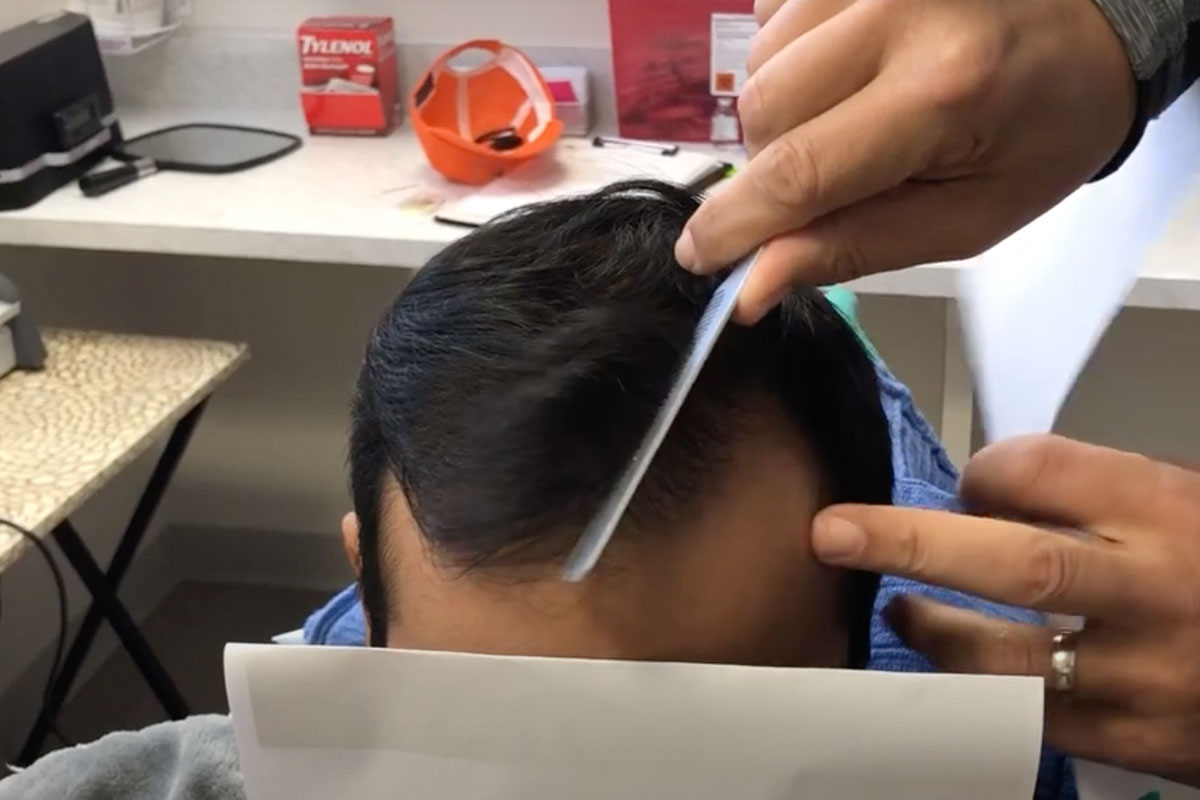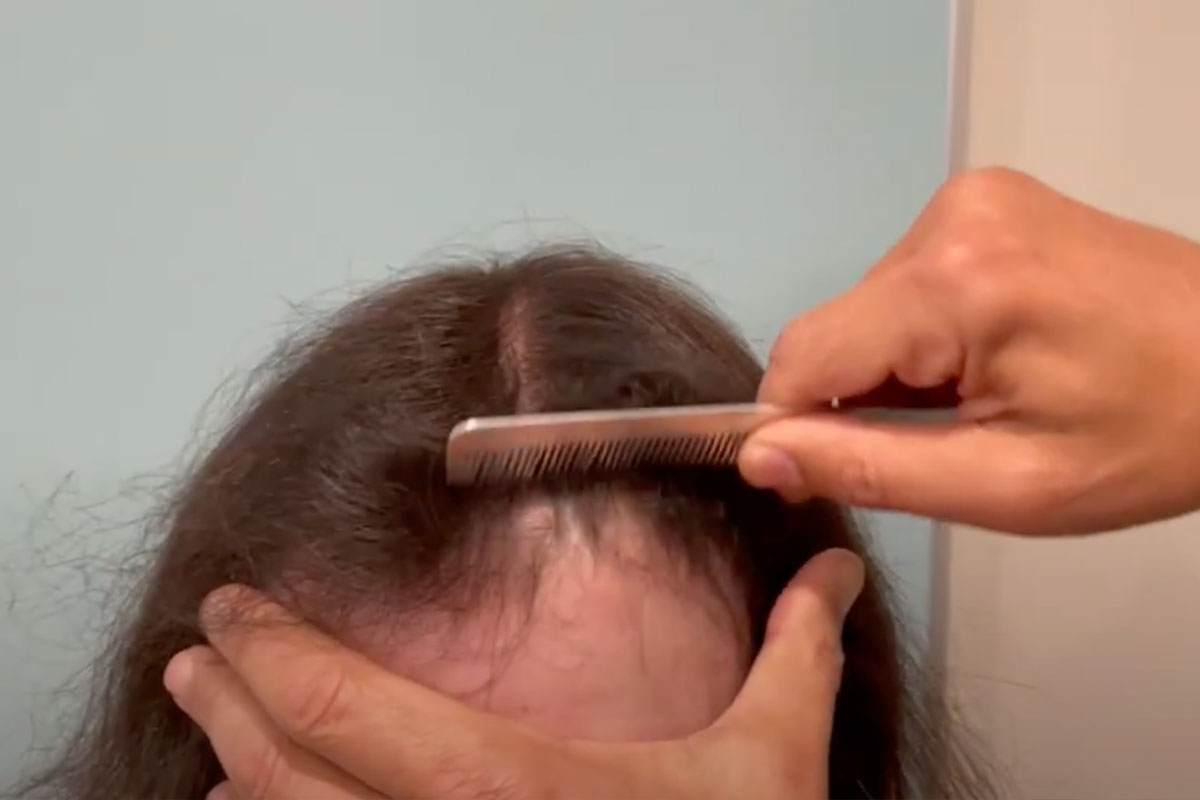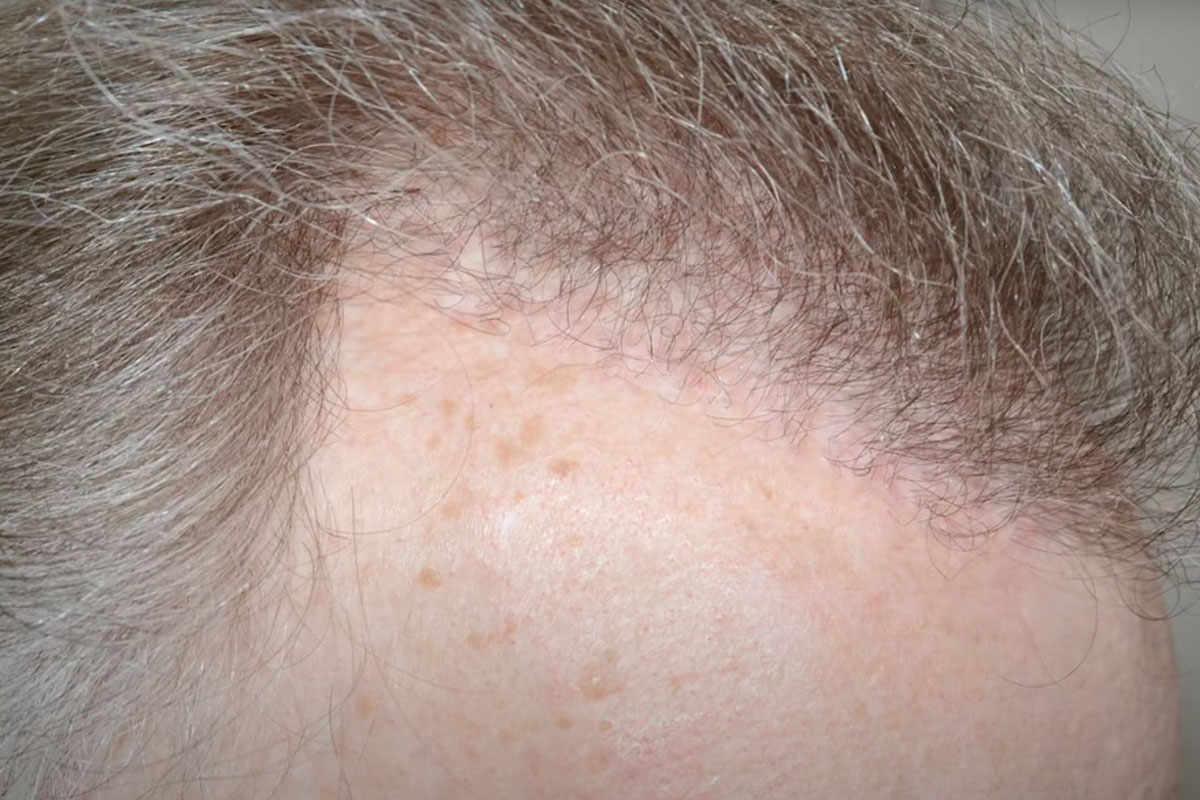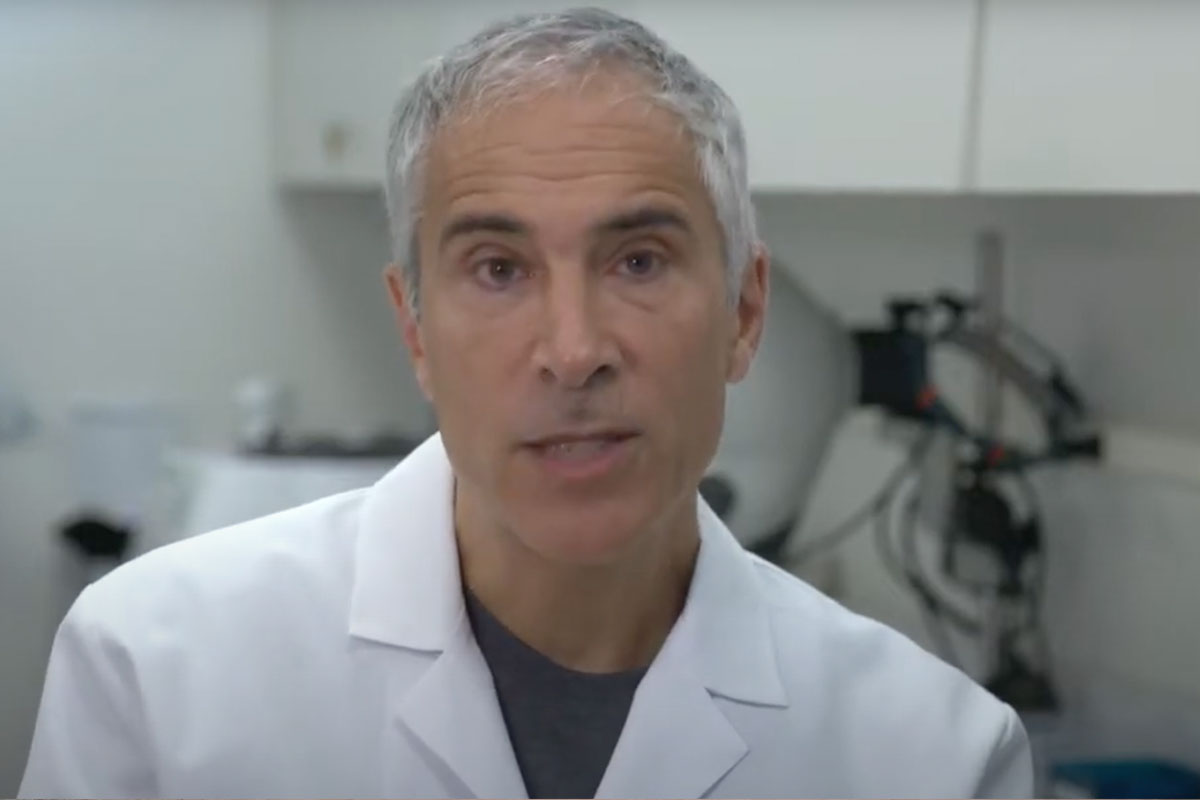Miami hair loss specialist J. Epstein, MD, FACS, leads Foundation Aesthetic Hair Restoration, providing specialized hair procedures for men, targeting concerns such as receding hairlines, thinning crowns, and beard restoration. Our team utilizes advanced techniques with an artistic approach to achieve natural, masculine results. Whether refining the hairline or enhancing facial hair, our treatments are tailored to restore confidence and complement your features.
Hair Loss Specialist
Miami
ACTUAL PATIENT
Hair Transplants to Treat
Signs of Male Baldness
If you’ve been noticing (or trying to ignore) the signs of balding and hair thinning for a while, there’s something you need to know: you are not alone. Hair loss is something that most men will experience at some point in their lives. In fact, some guys start losing their hair immediately after puberty, as early as 15 or 16 years of age.
But just because male hair loss is common doesn’t mean you have to live with it if you don’t want to. A hair transplant for men is a safe and effective procedure that, when performed by a skilled Miami hair loss doctor like Dr. J. Epstein, can restore hair to balding areas almost anywhere in the body, including the scalp, beard, eyebrows, and even the chest.

Understanding Male Baldness
Many factors can cause balding and hair thinning in men, but male pattern baldness is usually to blame. Male pattern baldness, also known as androgenic alopecia, is a genetic condition that accounts for more than 95% of hair loss in men. Guys who inherit the gene from their parents seem to be more sensitive to a hormone called dihydrotestosterone, or DHT.
In sensitive individuals, DHT makes the hair follicles shrink, causing the hairs to grow thinner and thinner over time. Eventually, the follicles become so tiny that no hair can grow out of them anymore. As the hair loss progresses, the hairline recedes to the back of the head, creating the characteristic “M” or deep “U” shape and bald patches at the crown of the head.
Hair Transplants for Men Videos
View Video of This Patient One Day After, Whose Final Results of 1400 Grafts are Shown Above
FUE Result – 2050 Grafts at 10 Months
Dr. Epstein discusses his latest approaches on medical management of hair loss in men
Future Hair Loss Therapies
Hair as a Specialty Not Just a Procedure
Other Causes of Hair Loss
Of course, not every case of hair thinning is caused by male pattern baldness. Other causes of hair loss in men include:
- Certain health conditions, such as high blood pressure, cancer, arthritis, high blood pressure, and thyroid disease
- Infections, including ringworm and scalp infections
- Grooming habits, like wearing hairstyles that pull back hair too tightly
- Certain medications
- Nutritional deficiencies
- Hair-pulling disorder, also known as trichotillomania
Hair Transplant Techniques
While there is no cure to stop the progression of balding or pattern baldness, many treatments are available to slow its progression and restore hair. These are the two most popular male hair restoration options offered at Foundation Aesthetic Hair Restoration:
FUE
Follicular unit extraction, otherwise known as FUE, is a groundbreaking technique that involves grafting individual hair follicles, one by one, directly from a donor site without having to remove entire strips of skin. Over 95% of our male patients choose this method because it produces fantastic results with little to no scarring, and patients can return to their daily activities within a couple of days without signals of having undergone a male hair transplantation procedure.
FUT
In follicular unit transplant (FUT), the surgeon removes a strip of skin from the back of the scalp to extract individual hair follicles and closes it with sutures. These follicles are then implanted into the balding parts of the head to achieve a fuller, denser appearance. While the FUT technique produces excellent results with hair replacement for men, it has the downside of leaving a noticeable linear scar behind that most patients would rather avoid.
Types of Hair Transplants for Men
Using the FUE technique, Miami hair loss specialist Dr. J. Epstein and his team at the hair transplant clinic can correct a number of balding and hair thinning issues, including:
- Restoring receding hairlines
- Concealing scars
- Restoring balding or patchy beards
- Achieving greater eyebrow coverage in men with naturally thin eyebrows or
- who have lost density due to overplucking, medications, injuries, or disease
- Creating a masculine, dense chest of hair in FTM transgender patients
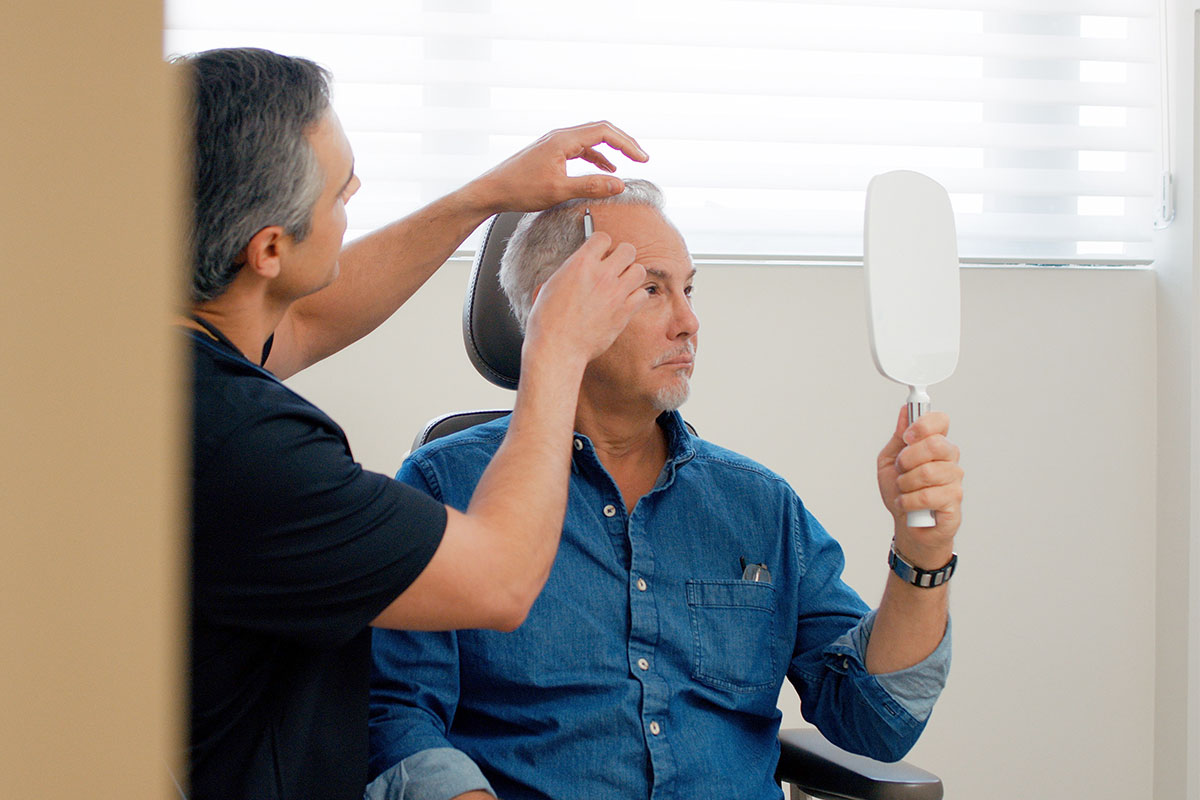
ACTUAL PATIENT
Candidates for Male Hair Transplants
Hair restorations are most commonly performed in individuals with male pattern baldness. In fact, hair transplants are the most frequent plastic surgery procedure performed on men. The surgery can restore density to or lower a thinning hairline, build up temporal points, fill in diffuse areas of thinning, and repair less-than-aesthetic results of prior hair transplant procedures.
- Individuals with thin or missing eyebrows, mustaches, or beards
- Individuals with hair loss due to scars from trauma
- Individuals with prior FUT strip hair transplant surgeries
The surgery can be safely performed on individuals from the mid to early 20s to the late 70s and beyond. Of course, each case is evaluated by the doctor first to determine candidacy and provide alternative or combined therapies.
In some cases, Dr. J. Epstein will advise the patient to receive clearance from his family doctor or cardiologist, and if indicated, the procedure can be performed under the supervision of an anesthetist who can monitor the patient as well as administer twilight sedation if desired.

ACTUAL PATIENT
Hair Transplant Clinic Consultation
At the hair transplant clinic, your consultation can be done either in person in our office or online. All patients are assigned a patient care coordinator who will be their point of contact and assure that the entire process runs smoothly, from initial contact all the way through surgery and follow-up with their Miami hair loss doctor.
All procedures are performed in our Miami clinic in our certified procedure suites. Most patients have the intervention done under oral sedation and local anesthesia, and it is a virtually painless, easy experience that takes 4 to 8 hours to perform in most cases.
Men's Hair Procedures FAQS
Can Male pattern baldness be cured?
Some drugs are clinically proven to treat male pattern baldness and even reverse hair loss in most men, but hair transplant surgery is the only way to permanently restore hair to bald areas in men.
What is recovery like after a male hair transplant?
There is little downtime after hair restoration surgery, and most patients can return to work and other normal activities within just 1 or 2 days. Exercise can be resumed on the 6th day.
Expect to see tiny crusts at each graft site that fall off in a week or so after the procedure. The transplanted hairs typically fall out by 2 to 3 weeks, then start to regrow at 4 months. As the hair continues to grow, it will gradually become thicker and longer. Depending on your aesthetic goals, a second procedure may be necessary to achieve more coverage, which can be performed as soon as 10 months later.
How much does a hair transplant cost in Miami, FL?
The hair transplant for men procedure can cost from $5,000 to $15,000 or more. The cost of your hair transplant for men in Miami will depend on the number of individual hair follicles you’re grafting, the type of procedure, and the experience of the surgeon you choose.
Will my transplant look natural?
Yes, in the hands of a talented and qualified surgeon, hair transplants can look completely natural. Both the FUE and FUT techniques involve transplanting hairs individually, avoiding the dreaded “doll hair” look and obvious scarring that old-school hair transplant surgeries used to produce.
How many grafts will I need?
It depends on your individual goals. During your consultation, Dr. J. Epstein will evaluate your potential donor and recipient areas and determine the number of grafts you need and how many sessions you require.
While every patient is different, a hair transplantation surgery for men may call for 600 to 3,000 or more grafts depending on the extent of the correction.
Are male hair transplants permanent?
Yes. A hair transplant is a long-lasting procedure. However, hair transplants do not treat the underlying causes of hair loss, so if you have balding or alopecia, hairs outside the transplanted area may continue to thin and fall out.




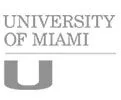



Why Choose Foundation Aesthetic Hair Restoration?
One phrase sums it best: Commitment to Excellence in Hair Restoration Surgery since 1994. What that means is you can be confident that your procedure will be performed to the highest aesthetic and technical standards, and from the moment you walk into our office on the day of your procedure, you will feel like your results are the most important thing that matters.
Our office also follows the strictest CDC and WHO guidelines to assure a Covid19-Protected environment.
ACTUAL PATIENT
Contact Us Today
Start Your
Journey
Have questions? Reach out today
for answers and more information.

